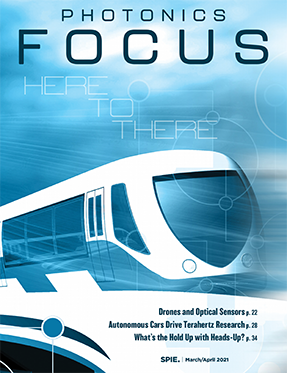Please sign in to your SPIE account to complete this action.
Join SPIE for full access to articles and downloads. You'll also enjoy other valuable member benefits. Learn more.
Subscription Information
There are many established and inviolable transportation standards, especially where safety is concerned. But others, perplexingly, don't exist at all. Today, optical engineers are working with automotive manufacturerers to develop heads-up displays for windshields, but there are no standards to guide or assess the safety of these displays. Is it a good idea to display extra layers of "helpful" information in a driver's field of view?
Lidar, which has movd beyond R&D into fierce commercial competition, also lacks published standards oto dictate what is required from an automotive lidar system. Today, numerous different technology approaches are market ready, and they deliver different results, with different levels of safety and performance.
As we move toward Industry 4.0—a not-so-distant era when our cars will "talk to traffic signals, buildings, other cars, and yes, possibly even pedestrians—what will emerge as the standard of blisteringly fast 6G communication?
Although the automotive industry is, in many ways, well established, the future remains unsettled. New optical technologies continue to disrupt the status quo, from displays to communication to navigation. While a car built in 1940 is very mechanically similar to a low-end car built in 2005, the past 15 years have seen a glut of new technologies to improve safety and comfort. And, if the stories in this issue of Photonics Focus are any indication, we can expect that the vehicles of the next fifteen years will completely transform what it means to commute.